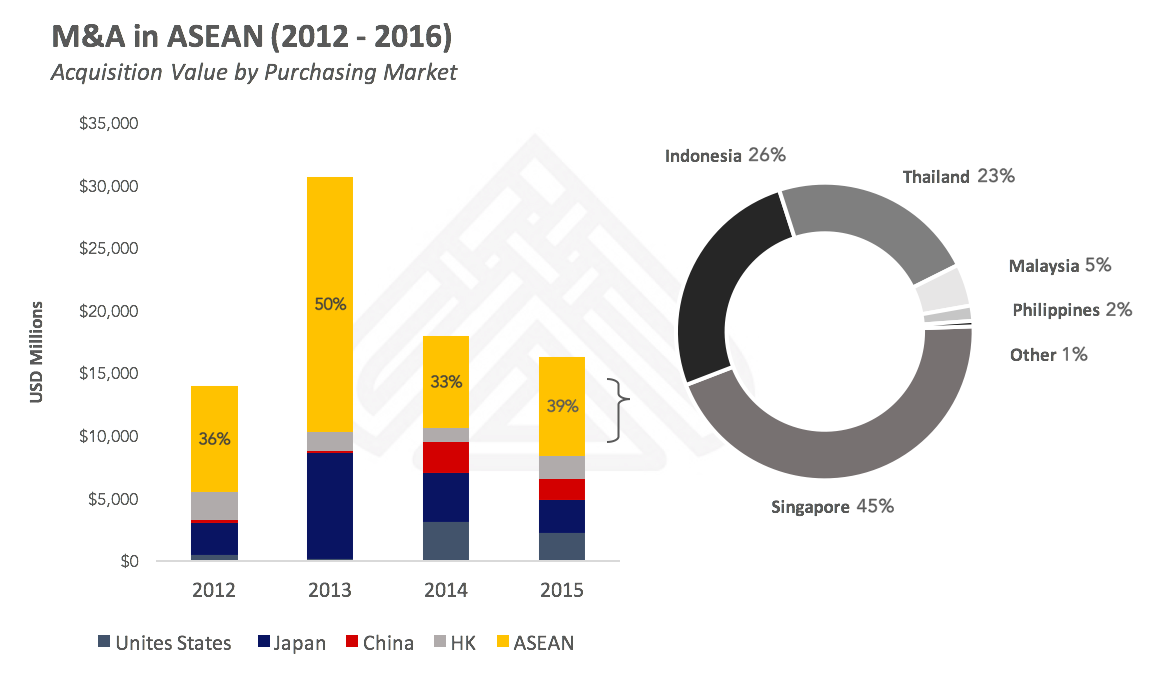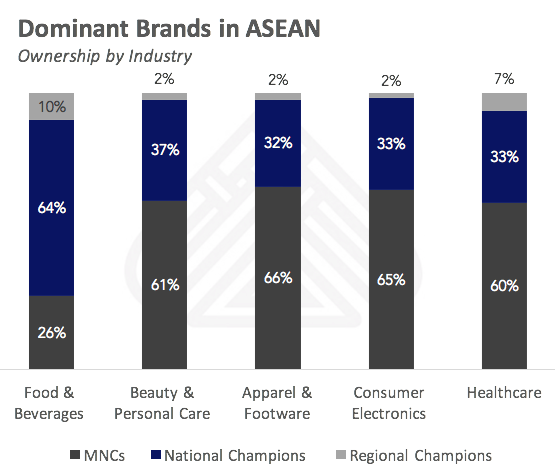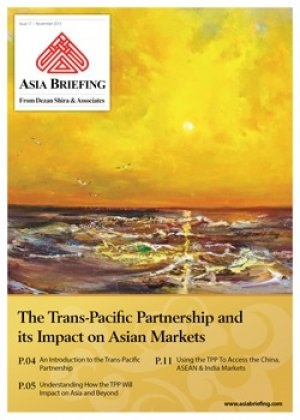The State of ASEAN M&As in 2016
By: Dezan Shira & Associates
Editor: Maxfield Brown
In its most recent investment report for 2016, ASEAN has focused heavily upon the intertwined issues of mergers and acquisitions (M&A). The report sheds light on the use of these tools by international investors as well as states within the bloc, providing insight on sentiment of varying parties. For those seeking to enter the region for the first time, understanding these trends is sure to provide important insight in the formation of effective entry and expansion strategy.
Mergers & Acquisitions
While foreign direct investment is often directed towards establishing new operations within a given country, M&As involve the purchase of or integration with a local company. This can present a number of benefits to investors stemming from the preexisting structure, connections, and reputation of the local company’s business. With a preexisting workforce, facilities, and supply chain, the M&A process allows companies to tap into market opportunities in real time. This can prove to be a important tool for those seeking to enter the market before their competition or gain access to sectors with limited access to investment.
 RELATED: Merger and Acquisition Support from Dezan Shira & Associates
RELATED: Merger and Acquisition Support from Dezan Shira & Associates
In addition to preexisting workers, factories, and permits, M&As also confer considerable intangible assets to foreign buyers. These can involve relationships with competitors, an understanding of regulatory compliance procedures, and most importantly, brand identity within the target market. While foreign investors would definitely be able to build these over time, the ability to build off of the best practices of an existing operations gives foreign investors considerable room to maneuver upon market entry.

ASEAN M&A Trends
In recent years, while total value of M&As has fluctuated slightly, the composition of transactions has changed significantly and can be analyzed by potential investors. As outlined above, both the United States and China have broken into the M&A scene in a large way in recent years. On the part of China, this appetite can be explained by adoption of China plus one manufacturing within ASEAN, and a need to quickly supplement existing production with low cost alternatives. On the part of the United States, pending completion of the Trans Pacific Partnership (TPP) is likely to make key markets such as the Vietnam, Malaysia, and Singapore more attractive for US companies.
In addition to increased appetite from external markets, the role of ASEAN as a catalyst for M&A deals should not be overlooked. Retaining between one third to one half of all value, key ASEAN states such as Singapore, Thailand, and Indonesia have been at the core of these purchases. While Singapore’s position can be explained by its position as a holding company jurisdiction and regional management center – similar to Hong Kong – the strong position of Indonesia and Thailand shows a significant regional interest in the M&A process and intra-ASEAN expansion. With the ASEAN Economic Community (AEC) breaking down barriers to trade and investment between members of the regional bloc, it is likely that ASEAN’s position will continue for some time.
Opportunities for Investment
Despite recent efforts aimed at converging regulation and connectivity through the AEC, ASEAN remains disjointed and disparate in terms of legal infrastructure, taxation, and doing business. These issues present significant obstacles to expansion and are felt not only by investors external to the ASEAN market but also by those within the regional bloc itself. To date, pan-ASEAN operations continue to be dominated by large multinationals, while ASEAN based brands remain largely isolated to their market of origin.

Not only does this help to explain the large percentage of M&A activity being conducted within ASEAN; more importantly, it presents a significant opportunity for foreign investors seeking to expand. Companies external to ASEAN, although not familiar to the region, are unlikely to face significant competition on regional scale from local players. Furthermore, those willing to conduct the due diligence necessary to find profitable local brands in various markets are sure to find ASEAN counterparts eager to expand their horizons.
Support from Dezan Shira & Associates
While M&A can prove an effective tool in overcoming a lack of local market knowledge, regulatory compliance and restriction on investment can easily hinder investors without proper preparation. Those seeking to acquire local companies will often face a variety restrictions and requirements depending on the market and industry in question. If understood, these regulations can be used as a means of evaluating investment options and followed to ensure compliance with regulatory authorities.
As regulations in many ASEAN states undergo changes to meet the needs of increasing development, investment, and growth, it is important to keep updated on any changes and to respond quickly to ensure compliance. For more information on M&A policy within specific ASEAN states or assistance in carrying out Mergers within the region, please get in contact with our legal specialists at asean@dezshira.com or visit us online at www.dezshira.com
|
Asia Briefing Ltd. is a subsidiary of Dezan Shira & Associates. Dezan Shira is a specialist foreign direct investment practice, providing corporate establishment, business advisory, tax advisory and compliance, accounting, payroll, due diligence and financial review services to multinationals investing in China, Hong Kong, India, Vietnam, Singapore and the rest of ASEAN. For further information, please email asean@dezshira.com or visit www.dezshira.com. Stay up to date with the latest business and investment trends in Asia by subscribing to our complimentary update service featuring news, commentary and regulatory insight. |
Annual Audit and Compliance in ASEAN
For the first issue of our ASEAN Briefing Magazine, we look at the different audit and compliance regulations of five of the main economies in ASEAN. We firstly focus on the accounting standards, filing processes, and requirements for Indonesia, Malaysia, Thailand and the Philippines. We then provide similar information on Singapore, and offer a closer examination of the city-state’s generous audit exemptions for small-and-medium sized enterprises.
 The Trans-Pacific Partnership and its Impact on Asian Markets
The Trans-Pacific Partnership and its Impact on Asian Markets
The United States backed Trans-Pacific Partnership Agreement (TPP) includes six Asian economies – Australia, Brunei, Japan, Malaysia, Singapore and Vietnam, while Indonesia has expressed a keen willingness to join. However, the agreement’s potential impact will affect many others, not least of all China. In this issue of Asia Briefing magazine, we examine where the TPP agreement stands right now, look at the potential impact of the participating nations, as well as examine how it will affect Asian economies that have not been included.
 An Introduction to Tax Treaties Throughout Asia
An Introduction to Tax Treaties Throughout Asia
In this issue of Asia Briefing Magazine, we take a look at the various types of trade and tax treaties that exist between Asian nations. These include bilateral investment treaties, double tax treaties and free trade agreements – all of which directly affect businesses operating in Asia.










